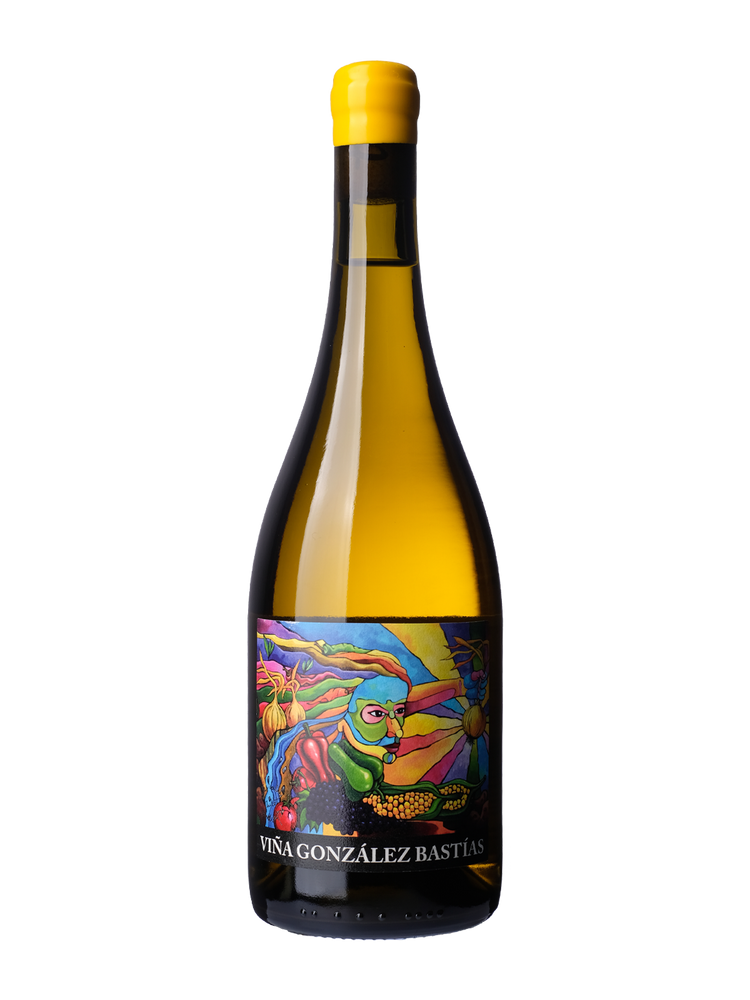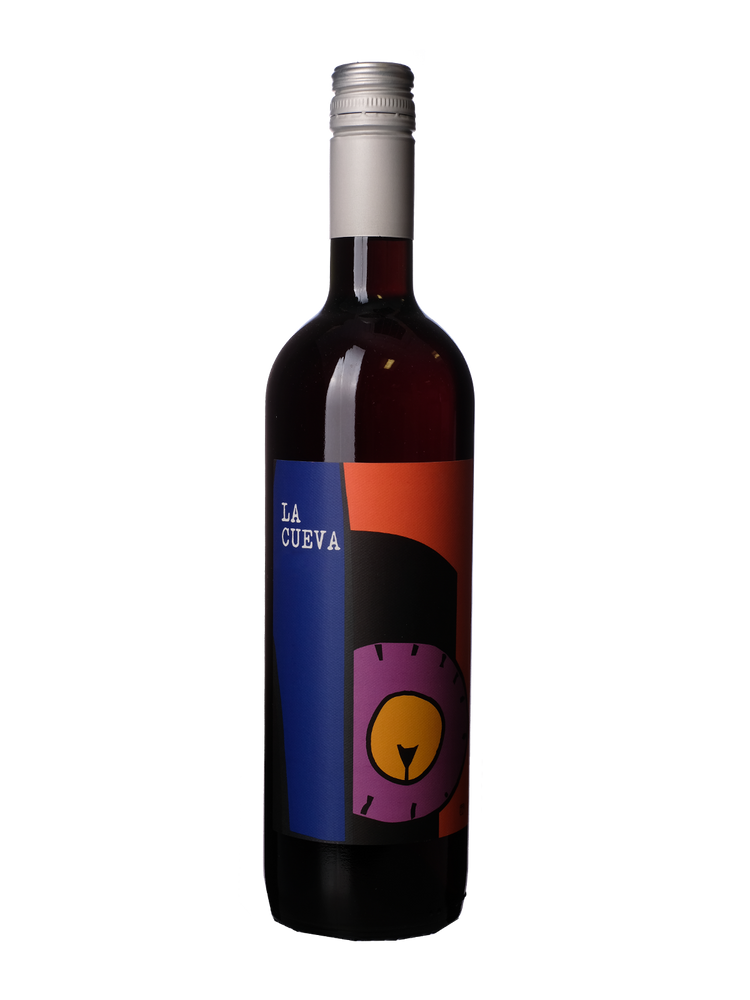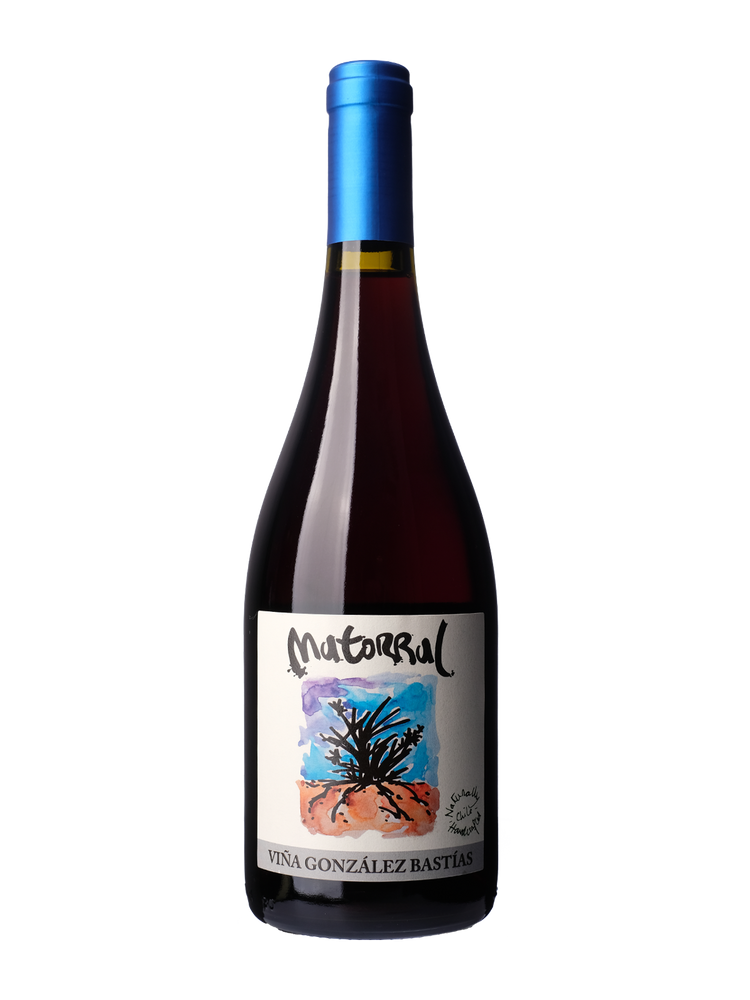Leo Erazo is making waves with A los Viñateros Bravos and Rogue Vine - delicious drinkable wines which capture their home region.
Itata in the south of Chile is in the spotlight all of a sudden. Wines from here, 400km south of the popular Central Valley region, tend to be made with a very different aesthetic to many of the Chilean wines that we’ve seen in the past. Rather than ripe Bordeaux-style blends, you see lighter reds made from traditional grapes, and whites fermented on their skins. Instead of icon wines with lots of new oak and ego, Itata seems to be about something entirely different.
Leo Erazo “Itata is a very old region. It's probably one of the oldest in Chile. The records say that the first vines arrived here in 1561”.
Chile’s other wine regions are largely dominated by large wine estates. Not so Itata. “It has many special features, but one that caught my attention is artisanal wines have always existed there. In the last census, there were around 4,000 hectares and 4,000 producers. This means that a producer has on average one hectare of vineyards. The layout of the vineyards is pre-industrial revolution, it hasn't changed, 95% are managed by hand. The weed control is done by horse and ploughing, treatments are done by hand”.

Itata also has different grapes to the more famous regions. “We normally say you get a big estate after colonization, after independence, or after a dictatorship”, says Leo. “This is when concentration of land happens. But around the 19th century, there were big mining companies”. He says that some well known families who’d made money from mining then set up Bordeaux-style estates, mainly in the central region just south of the capital Santiago. “When the Bordeaux style took over in the 19th century, the Mediterranean grapes like Pais, Cinsault, Semillon and Muscatel were all thought of as secondary grapes. The fine grapes – Cabernet, Merlot, Chardonnay – came into play”.
The País revival
These days what have been regarded as secondary grapes are becoming quite trendy in some segments of the market. “Now we see this”, says Leo. “But at university I was taught that Cabernet was the king. País has always been the basic Chilean wine”.
If you are a wine geek, you are probably more excited by Chilean País than Chilean Cabernet Sauvignon.
Chile has always had around 10,000 hectares of País, even though it rarely got a name check on the label. The first wine grower to champion it was Luis Antoine Luyt in Maule, the northern neighbour of Itata.

Around the world in wine.
Leo came back to Chile after a lengthy period travelling the world’s wine regions. “I was young so I wanted to travel, and wine was a really nice excuse. Everyone needs a hand with harvest, and you meet nice people”.
He worked at Rustenberg, a well known estate in Stellenbosch, while he was studying his Masters in viticulture. In Australia he worked in Canberra, and Tintara in the McLaren Vale. “It’s a huge winery, but it was a nice team and we lived next to the beach”. In New Zealand he was based at Sacred Hill in Hawke’s Bay, and did a spell in Central Otago.
Small beginnings
On his return to Chile, Leo went to Itata. “I knew Itata for Carignan”, he says. “The first wine we did was an old vine Carignan in 2008. Just two barriques. And I got offered a position at the University which was great. I had no money so I did small batches”.
At the time there were very few people trying to do the same thing, but Erazo says over the last five years quite a few have moved to the region, and have stayed there, making interesting wines in small quantities. The big wineries have also woken up to the region. “Every winery wants to have a Cinsault from Itata in their portfolio”, he says, “but it really makes no sense when you have a Cabernet, a Carmenere, a Bordeaux Blend and then a thousand bottles of Itata Cinsault”.

Itata is rare among Chilean wine regions in that it’s possible to grow vines without irrigation here. “This was the first thing that drew me here”, says Leo. “And then when I was travelling I realized that everything is on rootstocks in Europe and here there are no rootstocks, so you have the connection between the roots and the vine, with no problems of compatibility or issues in the graft”.
Leo buys grapes from growers but also owns vineyards. “Every time I can, I try to buy a vineyard. But there is a big attachment to the land. Although the prices for grapes are very low, the people who live on the farms have a good quality of life. They bond to their land, so the only way you can buy is when the old guys can’t work anymore, and the children don’t want to take over”. These plots are all small though, normally 0.5-0.7 hectares, and the economics here only work if you bottle and sell your own wine.
A new generation
The encouraging thing is the influx of young winemakers, drawn by the availability of old vine grapes at affordable prices. “For the last five years, many young people have come here”, says Leo. “It’s a bit like the Swartland. Now we have 20 young producers. They come with nothing, they start buying grapes, they bottle, and then they might buy a farm”. South Africa’s Swartland region has been a winemaking hotbed of evolution over the last decade, with young winemakers starting small by buying grapes and then building up their own brands from scratch, with the resource of interesting old vine grapes previously untapped the driving force behind the movement.
Is there an aesthetic to working more naturally in Itata? “I was in the Swartland when it started”, says Leo, “and this was very much natural focused, with no added yeast and no corrections”. Itata has a tradition of farmer wines, called Pipeños. “They are all no intervention, and they have been fermenting fine for hundreds of years. There is a harmony in the environment that helps make natural wines. We don’t call it natural at all: it is just the traditional way in Itata.
“Take skin ferments, for example. You had to do it. If you direct press a Muscatel grape, out of 100 litres of grapes you get 30 litres of juice. The pulp is so thick. There was no sense of making orange wine because it’s popular”.
Sustainable Itata
One of the issues in Itata is the widespread use of herbicides. “Because the price of the grapes is so low, the old guys use herbicides.”. How does Leo work without them? “The first thing I did was plough with a horse. [heavier machinery compacts soil, reducing oxygen and literally squeezing the life out of it.] But I could see that I wasn’t building up fertility. Because of many years of herbicides, and the fact that ploughing doesn’t bring new organic matter, the crops went down. The old guys were laughing at me. They liked the ploughing, but said ‘the vine has to eat’. This is true, but they would use chemical fertilizer, and I didn’t want to do that. But now, after seeding grasses like wheat, and then using these as a mulch (something I learned from Rosa Kruger in South Africa) which retains moisture in the soil and adds organic material, it’s working well. After seven years in the first plot we have the crop back”.
Mapping Itata
The Itata region is divided into ‘sectors’. One of Erazo’s goals is to discover the characteristics of these sectors and reveal them in sector-specific wines. “In the next 10 years we will see the differences between the sectors: they have been naturally mapped by the people there”.
So is Erazo looking to delineate special terroirs in Itata, in effect finding the top crus? And would this benefit the region? “I think it is the way it is going to go. The old guys have the names for the little places. They aren’t fancy cru names; they are farmer’s names. Because of the exposure and the weathering of the rock, we see different expressions of the granite. Sometimes there is more clay, sometimes less clay. There can be red clays and quartz, or you can have a more yellow profile. The Cinsault and País from different soils taste completely different”.
The Pipeños in litre bottles have proved popular. “It’s the perfect size”, he says. “Some people relate it to bulk, which is a pity”. Pipeño has been made in the south of Chile for centuries, the name came about because it was made in raulí oak vats, known as pipas.
Leo isn’t just looking to the past. “We built a family farm, in front of the Pacific ocean”. He has planted a mix of grapes including Chenin Blanc. “I put in all the varieties that I thought would work,’ he says. Leo got the first Chenin crop, of just 60 litres, this year. “It is really special. The Pacific is cold, so we harvest this last, it only gets to 11.5% alcohol. The flint character shows in the Chenin Blanc fantastically well”.
We’ve got an exciting selection of deliciously different wine from Chile – from Rogue Vine and González Bastías who work with old vines in the south to super modern Viñedos de Alcohuaz – mountain wines from the top of the Elqui Valley.




